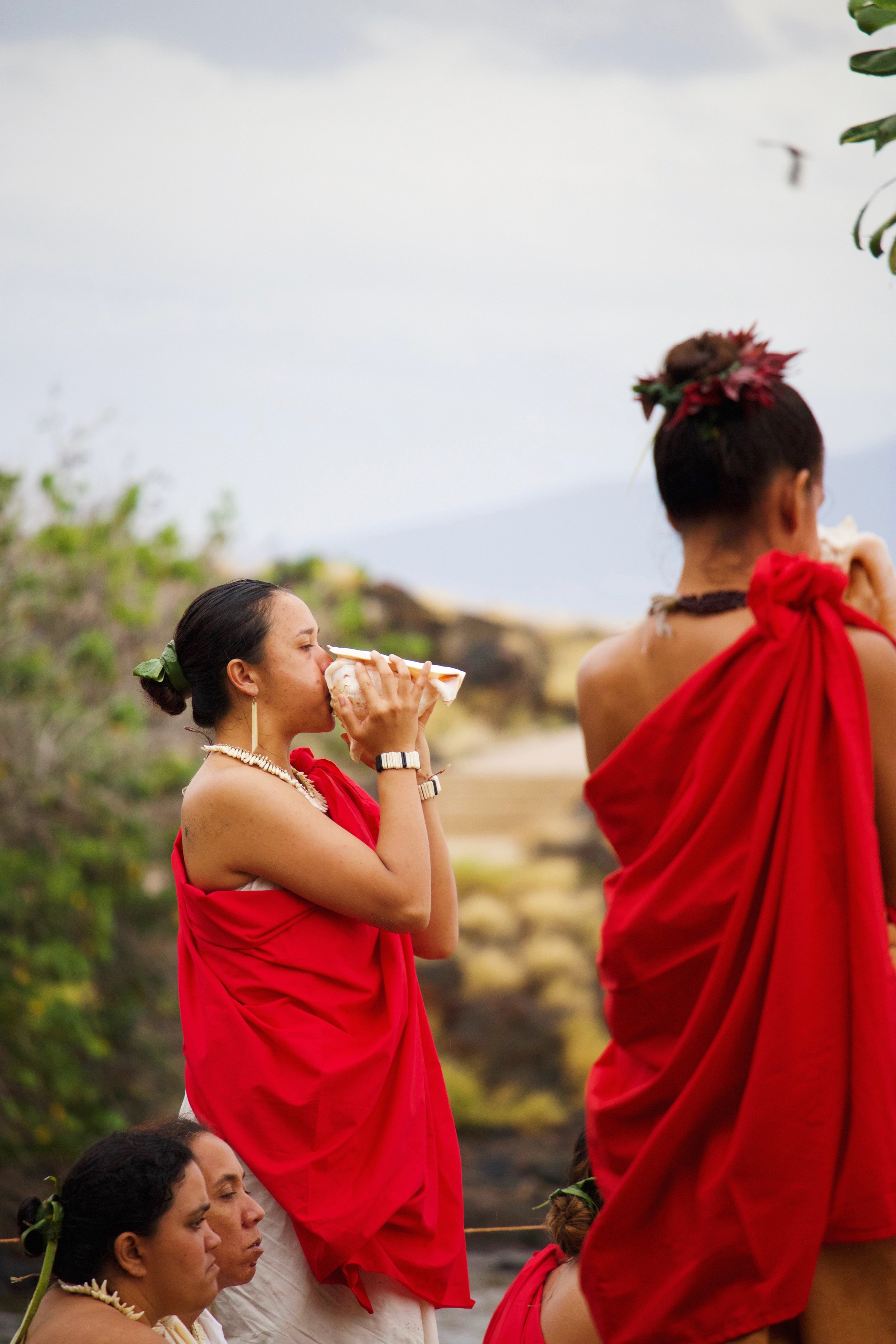Kapulei Flores
Lono to Kū Ceremony
Photographed: March 13, 2021
Location: Pelekane Beach, Hawaiʻi Island
Within Hawaiian culture, there are gods and deities associated with the different elements of nature who are acknowledged and honored through ceremonies, hula (dance), chants, and prayers. These cultural rituals have been passed down through the generations and are still being conducted today. Many of these hula, chants, and prayers have been perpetuated from our ancestors through oral accounts that were later recorded in written form.
Captured in these photos, taken below Puʻukoholā Heiau on Hawaiʻi Island, is a beautiful ceremony that honors the transition between the seasons of Lono and Kū. Lono is connected to the wet season, agricultural practices, fertility of the land, and the period called Makahiki. Whereas, Kū is associated with strategy, strength, and the dry season. Symbolic aspects grounded in tradition are incorporated in this ceremony through the use of kiʻi (wooden images), waʻa (canoe), and participants’ attire. The waʻa goes out into the ocean with the Lono kiʻi being held high and returns to Pelekane Beach with the Kū kiʻi being held in the same manner, affirming the shift from Lono to Kū. Just as the kiʻi are switched, chanters and dancers change their attire from white to red, colors that are associated with each respective god. Ceremonies like this seem to transport me back to the time of my kupuna (ancestors), a feeling so ancestral I feel it in my koko (blood), puʻuwai (heart), and naʻau (gut). Ceremonial protocols such as this strengthens our connection to our culture and traditions throughout the year.












